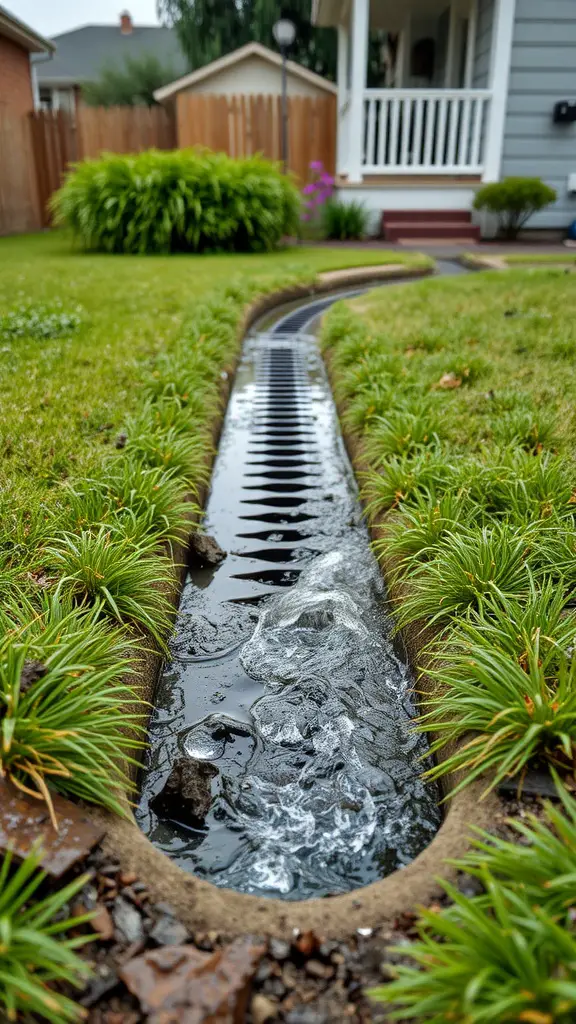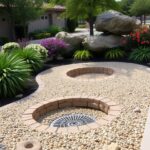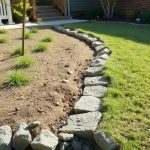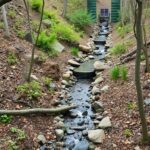Discover a variety of effective drainage solutions to tackle common water issues around your home or property. From simple fixes to more advanced systems, these 21 solutions aim to keep water where it belongs and help you maintain a dry, healthy space. Let’s get straight into it!
Surface Drains to Alleviate Flooding
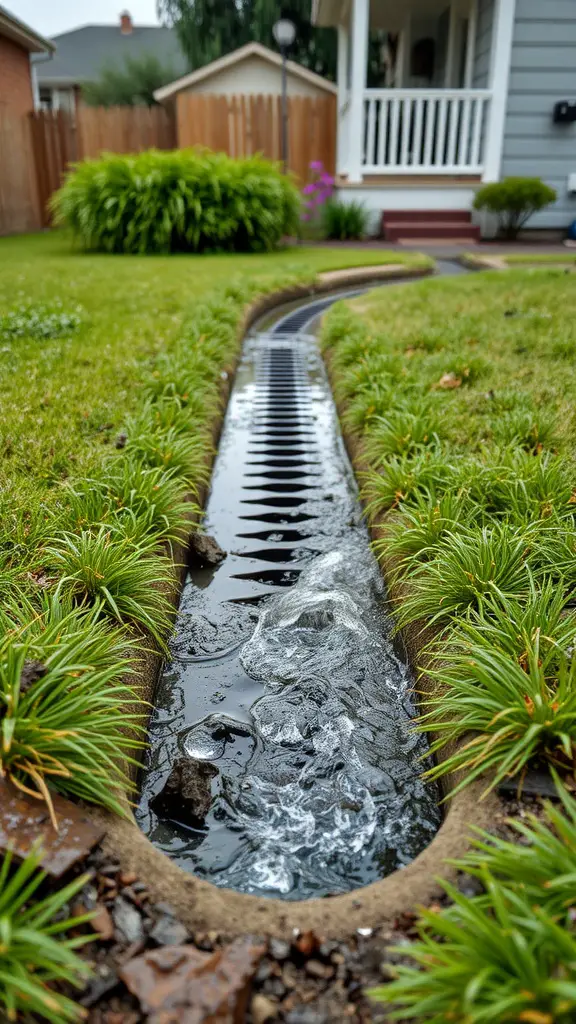
Surface drains are a key solution for managing water runoff in residential areas. The image shows a beautifully designed surface drain running through a lawn, effectively directing water away from the house. This setup is crucial for preventing flooding during heavy rain.
The drain features a slotted design, allowing water to flow smoothly while keeping debris out. Surrounding it is lush grass, which not only looks inviting but also helps with filtration. Homeowners can enjoy a well-kept yard without the worry of standing water.
Installing a surface drain like this can significantly reduce the risk of water pooling, which can lead to erosion and damage. It’s a practical feature that enhances both functionality and aesthetics. Whether you’re dealing with heavy rains or melting snow, a surface drain can make a real difference in keeping your property safe and dry.
Sump Pumps: Essential for Basements
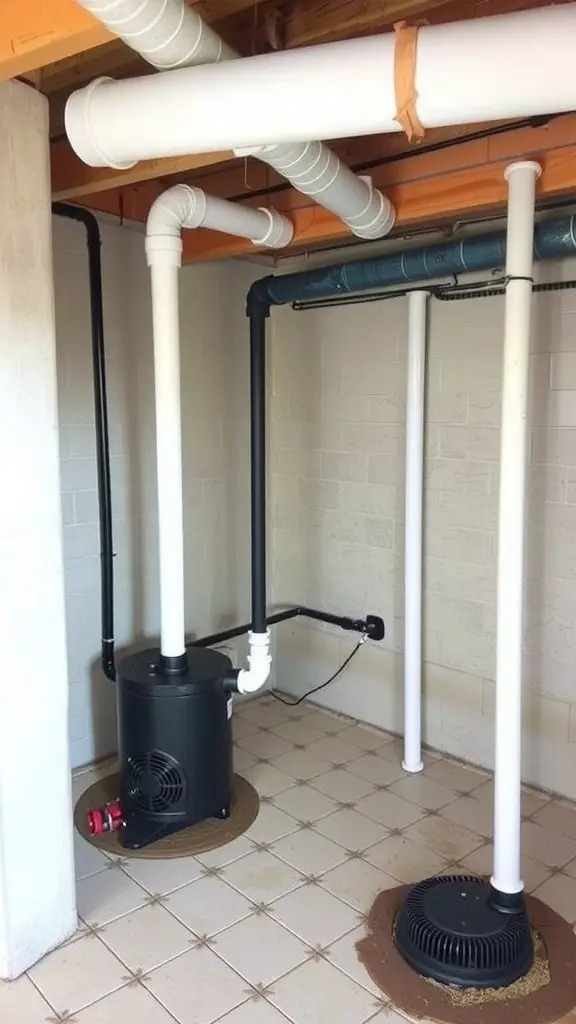
Sump pumps play a key role in keeping basements dry. They are crucial in areas prone to flooding or heavy rain. The image here shows a well-set-up sump pump system. You can see the pump itself, along with the necessary piping that directs water away from your home.
Having a sump pump installed can save homeowners from serious water damage. When water levels rise, the pump kicks in, removing excess water before it causes harm. This is especially important for those who use their basements for storage or living space.
The black unit in the picture is the sump pump, while the white pipes are crucial for directing water out of the basement. Regular maintenance can keep these systems running smoothly. It’s a simple way to protect your home and peace of mind.
Rain Gardens: A Natural Solution for Drainage
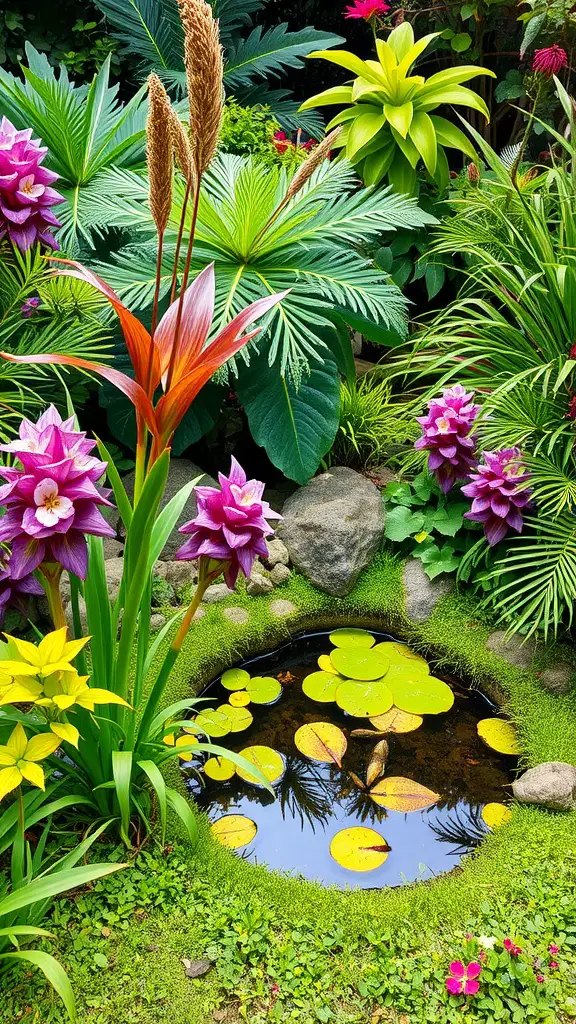
Rain gardens are a fantastic way to manage water runoff. They capture rainwater and allow it to soak into the ground. This not only helps with drainage but also supports local ecosystems.
The image shows a vibrant rain garden, filled with lush plants and a small pond. The colorful flowers and green foliage create a beautiful space that attracts wildlife while effectively managing water. The pond at the center is perfect for collecting rainwater, which nourishes the plants around it.
Creating a rain garden can be simple and rewarding. Start by choosing a location that receives runoff from roofs or driveways. Select native plants that thrive in wet conditions. These plants will not only thrive in the rain garden but also support local pollinators.
By implementing a rain garden, you contribute to natural drainage solutions while enhancing your outdoor space. It’s a win-win for your yard and the environment!
Swales: Grassy Channels for Water Control
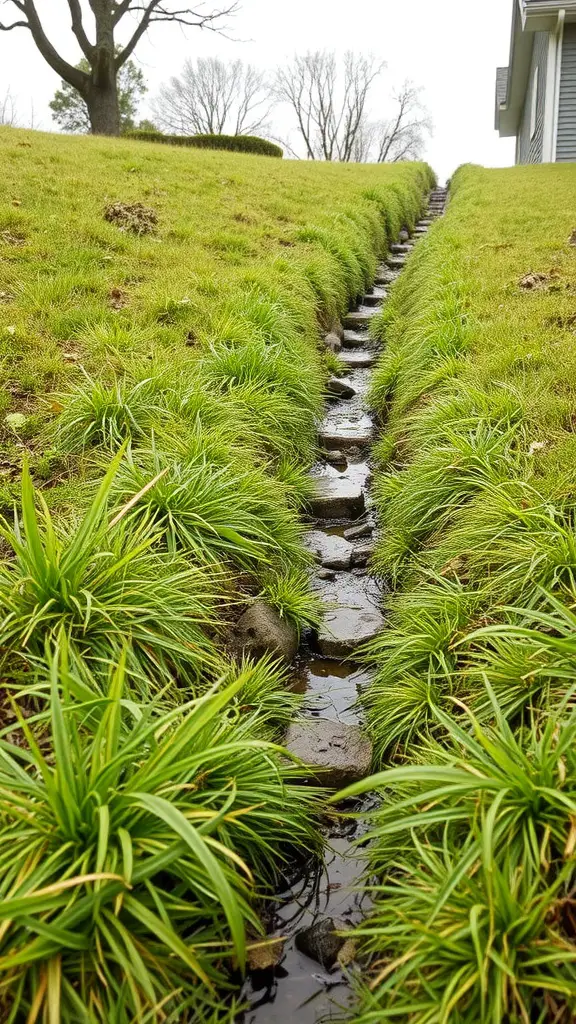
Swales are an excellent solution for managing water runoff effectively. They are essentially shallow, grassy channels designed to direct water away from areas where it might cause problems, like flooding or erosion.
The image shows a swale running down a gentle slope, lined with lush green grass and scattered stones. This setup not only helps control water flow but also adds a pleasant aesthetic to the landscape.
These channels work by slowing down the water, allowing it to soak into the ground. The grass and plants along the sides help absorb excess moisture while filtering pollutants. So, they are great for the environment, too!
A well-placed swale can transform a yard’s drainage issues into a natural water management system. It’s a simple yet effective way to keep your outdoor space dry and healthy.
Dry Wells: Underground Solutions for Water Storage
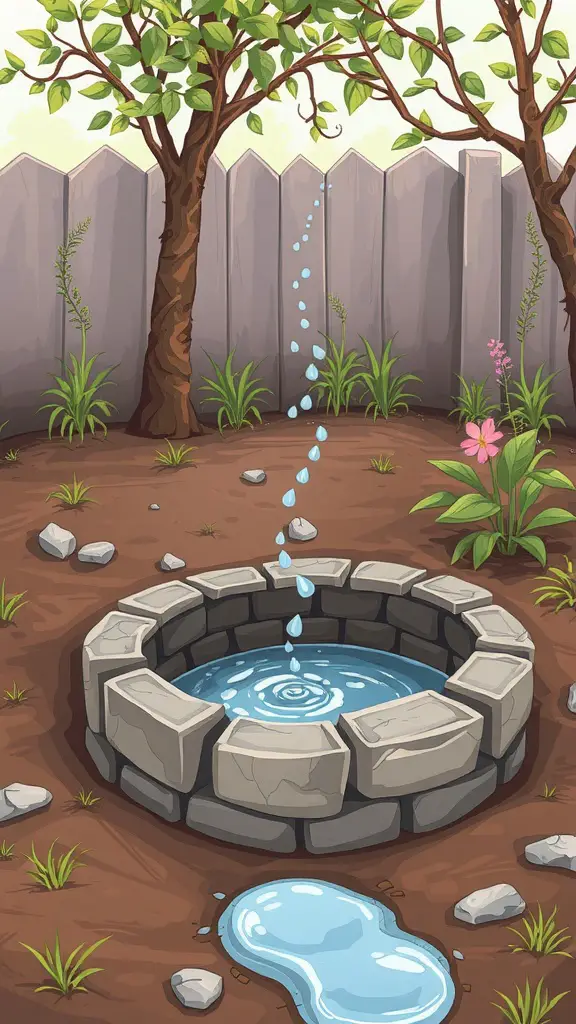
Dry wells are a nifty solution for managing excess water in your yard. The image shows a charming dry well surrounded by greenery, where rainwater trickles into a stone structure. It’s a simple yet effective way to store water and protect your landscape.
In the image, droplets of water are falling into the well, indicating that it’s functioning well. The surrounding plants and trees suggest that this setup can help maintain a healthy garden. The well collects rainwater, allowing it to seep into the ground naturally. This reduces runoff and helps replenish groundwater.
Creating a dry well can be a fun DIY project. You dig a hole, line it with stones, and let nature take its course. Adding a few plants around enhances the aesthetics and ensures your yard stays vibrant. This solution not only helps with drainage but also contributes to a sustainable environment.
Permeable Pavers for Sustainable Drainage
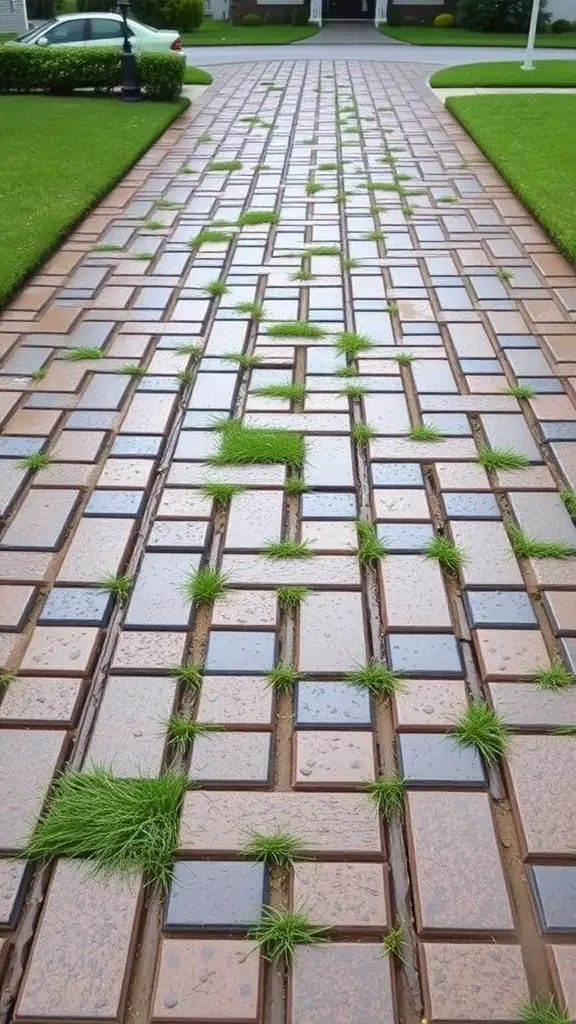
Permeable pavers are a fantastic choice for managing drainage effectively. The image shows a well-designed pathway made from pavers that allow water to seep through. This simple yet effective design helps reduce runoff, making it a great option for anyone looking to enhance their outdoor space sustainably.
The combination of pavers and grass is not just visually appealing; it also plays a significant role in filtering rainwater. The grass between the pavers absorbs water, which reduces flooding and erosion. It’s a practical solution that adds a touch of nature to hard surfaces.
Using permeable pavers can often lead to lower maintenance costs over time. They help keep your property dry and can even improve the overall health of the soil beneath. So, not only do they look good, but they also contribute positively to the environment.
Channel Drains for Patios and Driveways
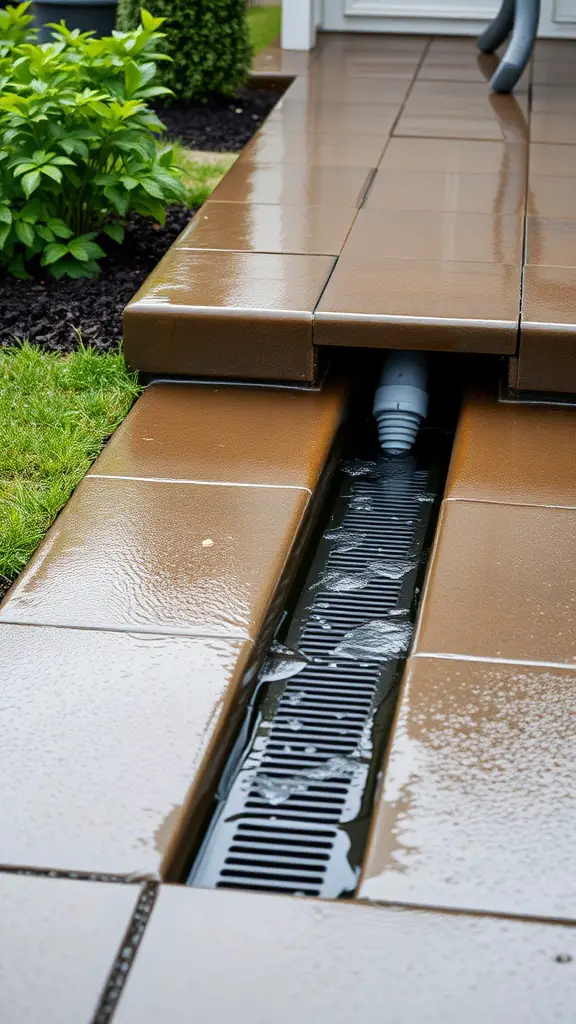
Channel drains are smart solutions for managing water flow on patios and driveways. This image shows a sleek channel drain installed neatly between paving stones. The design ensures that rainwater is directed away from surfaces, preventing puddles and slips.
One of the main benefits of using channel drains is their ability to handle heavy rain. This system captures water efficiently and channels it away from areas where it could cause damage. In the photo, you can see the drain is strategically placed to maximize its effectiveness.
These drains can also enhance the look of your outdoor space. They blend well with modern design elements, keeping everything neat and tidy. The integration of channels into patios and driveways not only provides functionality but also maintains aesthetic appeal.
Installing a channel drain can help with maintenance too. Regular cleaning is easier, as it prevents debris buildup around your outdoor surfaces. The drain shown here is designed to make cleaning a breeze, promoting better drainage and a safer environment.
French Drains for Effective Water Management
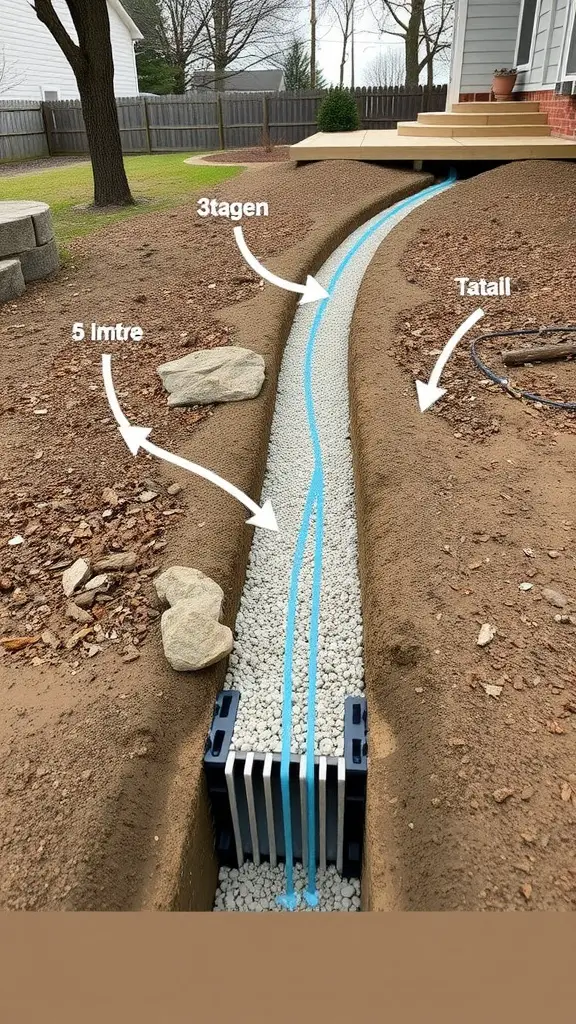
French drains are a fantastic solution for managing water around your home. They help redirect excess water away from your foundation, preventing flooding and structural damage.
The image shows a well-constructed French drain. You can see the trench filled with gravel, allowing water to flow through easily. The blue lines illustrate the path water will take, which is usually directed towards a drainage outlet.
This setup typically features a perforated pipe at the bottom, helping to collect and channel water efficiently. It’s crucial to ensure the trench has a proper slope to promote drainage. In the image, we see markings indicating a slope of about 3 degrees over a length of 5 meters, which is ideal.
Using natural materials like gravel allows for effective filtration. This keeps the drain clear of debris and helps maintain its efficiency. Plus, it blends nicely into the landscape, making it a practical yet unobtrusive solution.
If you’re considering a French drain, it’s a great investment for any homeowner. It not only protects your property but also adds value in the long run.
White Water Systems: Managing Heavy Rainfall
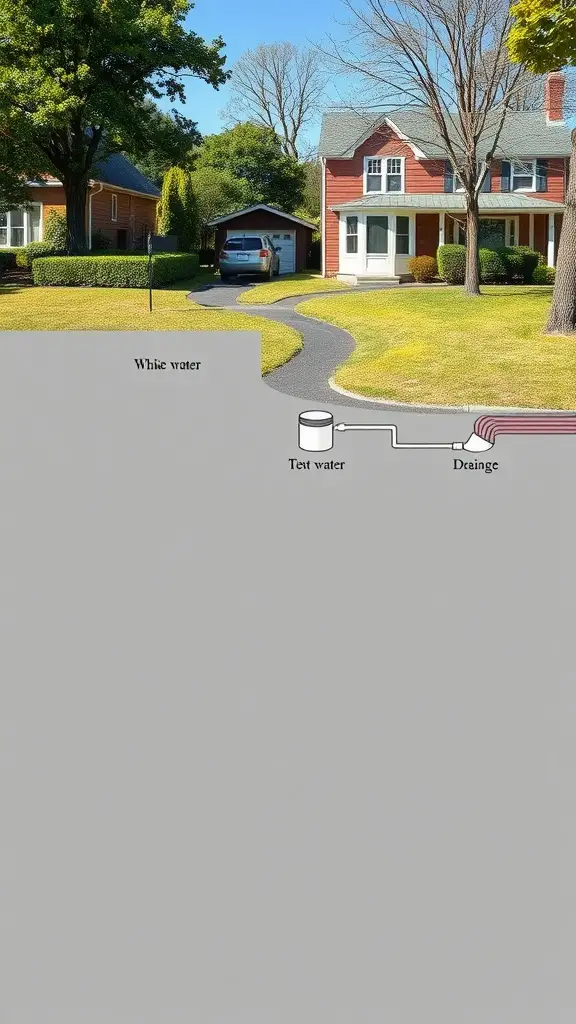
When heavy rainfall hits, effective drainage solutions become crucial. The image illustrates a simple yet efficient white water system. This system collects rainwater and directs it to a drainage point, preventing flooding in your yard.
In the image, you can see the pathway leading to a house, with a clear setup for managing water flow. The white water represents the clean rainwater collected and redirected. The diagram shows how the system connects to a drainage outlet, ensuring water is channeled away safely.
Using a reliable drainage system helps keep your property dry and protects your home’s foundation. It’s a straightforward solution that can save you from larger issues down the road. So, if you’re thinking about updating your drainage, consider implementing a white water system for effective management of heavy rainfall.
Downspout Extensions to Prevent Erosion
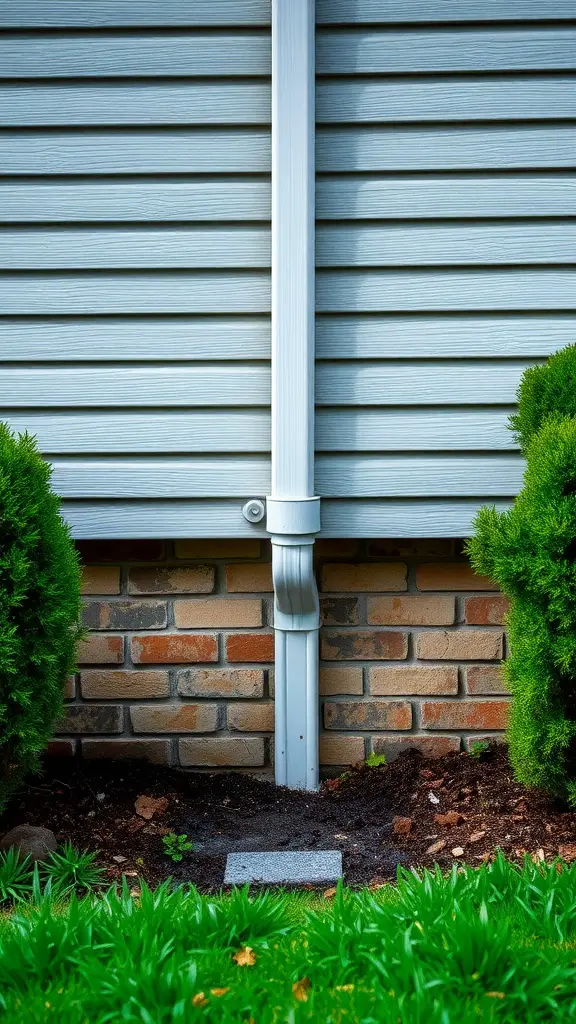
Downspout extensions are essential tools for directing water away from your home’s foundation. In the image, you can see a well-installed downspout that leads water away from the wall. This setup is crucial in preventing erosion and protecting your landscape.
When rainwater flows directly from the roof into the ground near the foundation, it can cause soil erosion. This leads to uneven settling of your home and potential damage. The extension on the downspout helps to channel water further away, reducing the risk of these issues.
Installing a downspout extension is straightforward. You can use materials like flexible piping or rigid PVC, depending on your needs. Just make sure it directs water at least 3-4 feet away from the house. This simple step can save you from costly repairs down the line!
Maintaining your downspout and its extensions is equally important. Regularly check for clogs or blockages, especially after heavy rainfall. Keeping it clear helps ensure that water flows smoothly away from your home.
Gravity Drains for Sloped Landscapes
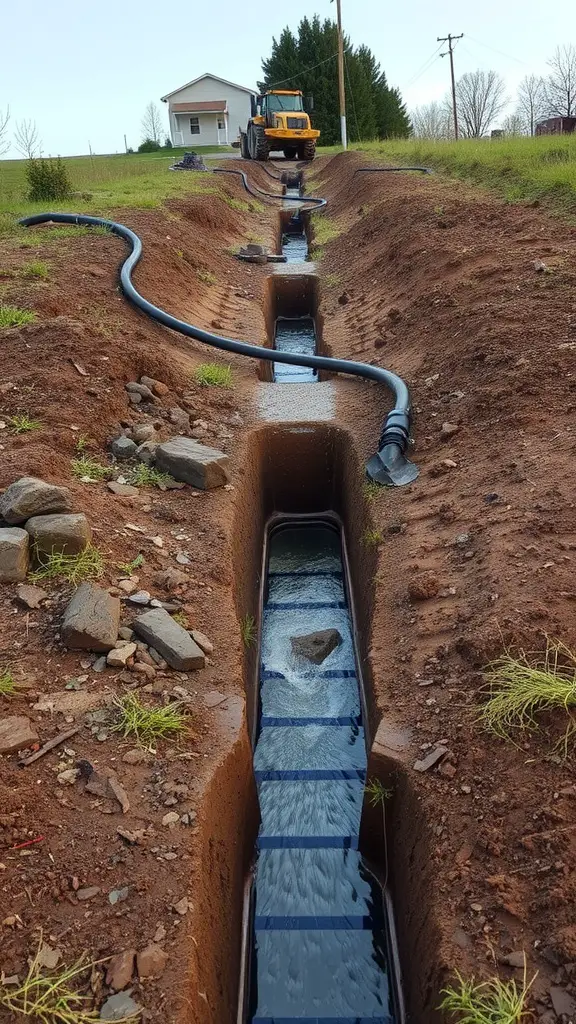
Gravity drains are an effective solution for managing water on sloped landscapes. They help direct excess water away from areas where it can cause damage, such as foundations and gardens. In the image, you can see a trench with a drainage system in place, designed to guide water flow seamlessly.
The setup features a channel lined with a drainage pipe that collects water. The slope allows gravity to do the work, moving the water away naturally. This method is not only efficient but also reduces the need for pumps, making it a cost-effective drainage solution.
As we look at the trench, we notice the construction equipment nearby. This indicates that the installation process is underway. Proper grading and positioning are key to ensuring the system functions well. Choosing the right materials can also enhance durability, ensuring the system lasts for years.
Implementing gravity drains can greatly improve water management on your property. They can prevent erosion and standing water, making your landscape healthier and more attractive. If you have a sloped area, consider gravity drains as a smart and practical drainage solution.
Bioswales: Eco-Friendly Urban Drainage
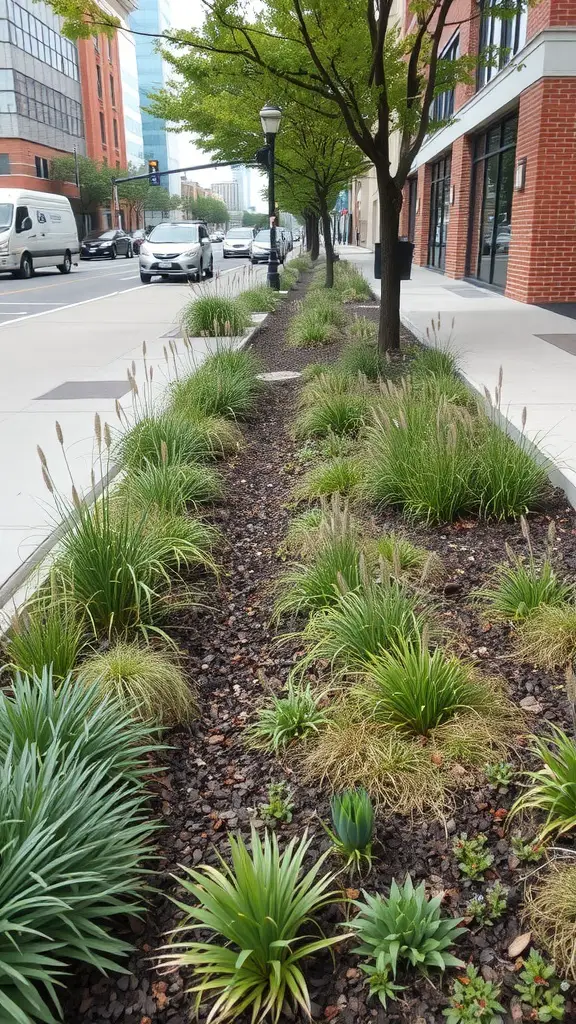
Bioswales are a fantastic way to manage stormwater in urban areas. They act like natural sponges, soaking up rainwater and reducing runoff. The image shows a well-designed bioswale lined with lush greenery. This design not only helps with drainage but also enhances the beauty of the street.
The plants in the bioswale filter pollutants and provide habitats for urban wildlife. These green spaces are essential for improving air quality and creating a more pleasant environment for pedestrians. Plus, they help reduce the burden on stormwater systems, making city living more sustainable.
In this image, you can see how the bioswale is integrated into the urban landscape. It is carefully positioned between the sidewalk and the road, allowing rainwater to flow naturally into it. This setup is both practical and attractive, showcasing how effective drainage solutions can blend seamlessly with city aesthetics.
Soakaways: Allowing Water to Percolate
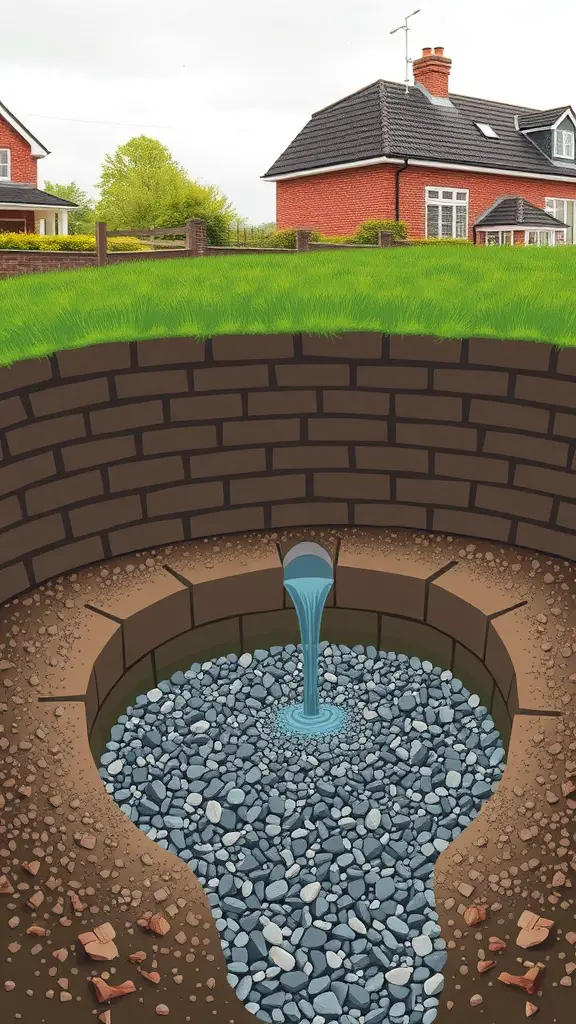
Soakaways are a great way to manage water drainage in your yard. They help control excess rainwater by allowing it to seep into the ground naturally. Imagine a funnel where water flows smoothly into a gravel-filled pit below the surface. This design encourages the water to filter through the soil, preventing flooding and pooling.
The image shows a well-constructed soakaway with a clear view of how it works. The water enters the system, cascading down into a gravel bed. This setup is not only practical but also environmentally friendly, as it helps recharge groundwater levels.
If you’re looking for a simple drainage solution, soakaways can be a solid choice. They fit nicely into gardens and yards, helping to keep your outdoor space dry and usable after heavy rains. With proper installation and maintenance, soakaways can last for many years, providing a hassle-free drainage option.
Catch Basins for Efficient Drainage
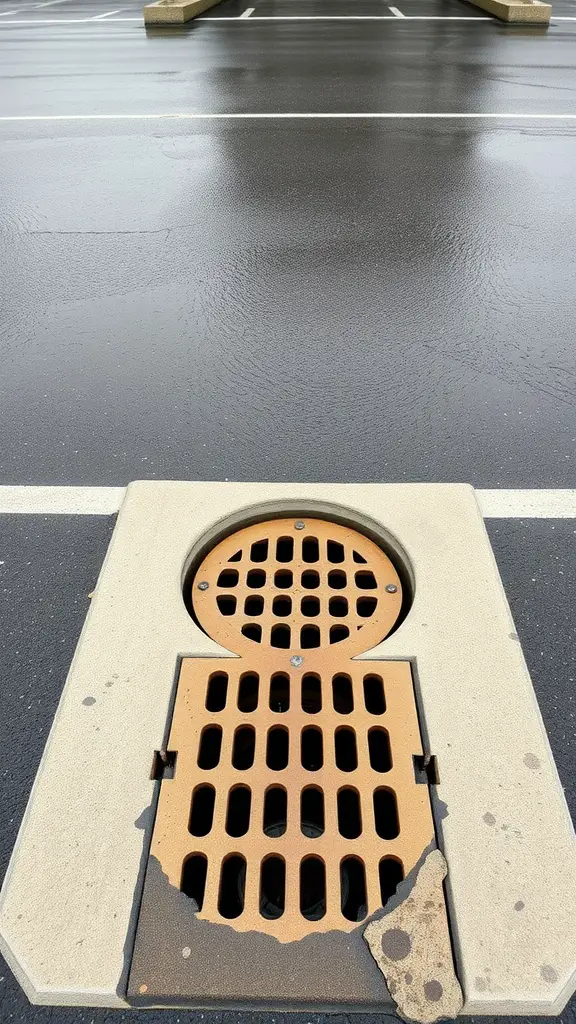
Catch basins play a key role in managing water drainage effectively. In the image, we see a well-maintained catch basin situated in a parking lot. Its design allows for water to flow in while blocking debris, which helps prevent clogs.
When it rains, surfaces like parking lots can collect a lot of water. Without proper drainage, this water can pool and create problems. The catch basin helps keep things flowing smoothly. It captures water and directs it into underground drainage systems, which is essential for maintaining a safe environment.
Using catch basins can reduce the risk of flooding, especially in areas prone to heavy rainfall. They come in various sizes and shapes, making them suitable for different locations. By incorporating them into your drainage design, you can help ensure that water is efficiently managed.
Green Roofs: Innovative Drainage Solutions
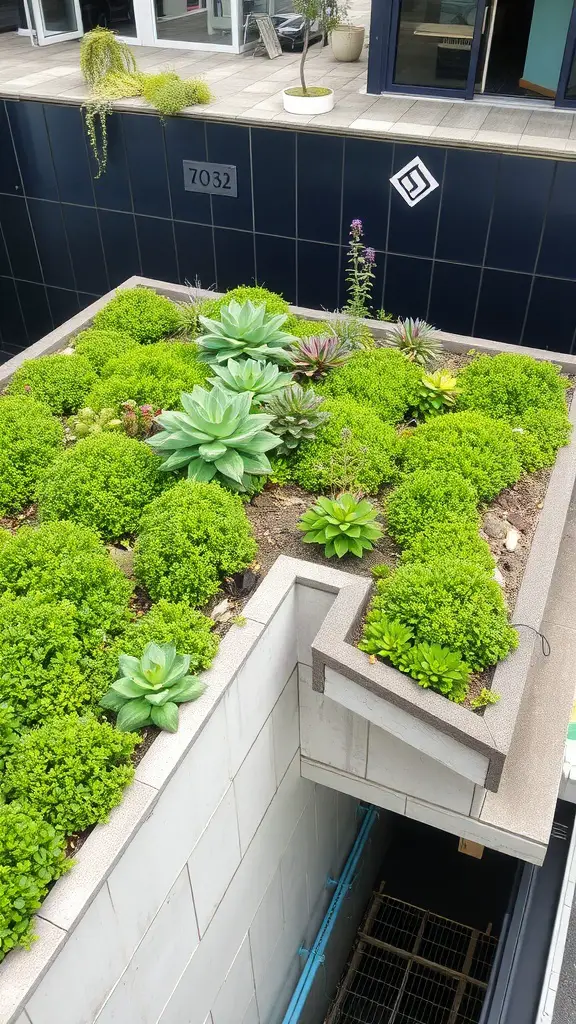
Green roofs are popping up in urban areas, and they are more than just a pretty sight. This image shows a lush green rooftop teeming with various plants. The vibrant shades of green, along with the different textures, illustrate how nature can be integrated into our buildings. This approach not only enhances the aesthetic appeal but also contributes to effective drainage solutions.
These roofs act as a natural sponge. They absorb rainwater, reducing runoff and preventing flooding in the streets below. This is particularly important in cities where hard surfaces dominate, making it hard for water to soak into the ground. The plants on green roofs help in managing stormwater, ensuring that the drainage systems aren’t overwhelmed during heavy rainfall.
Moreover, green roofs provide insulation, which can help in reducing energy costs. They can keep buildings cooler in summer and warmer in winter. This dual function of managing water and improving energy efficiency makes them a smart choice for modern architecture.
In the image, you can also see how the design is not only functional but stylish. The mix of succulents and other greenery adds character to the rooftop, making it a relaxing spot for inhabitants. It’s a win-win for both the environment and the people living in the building.
